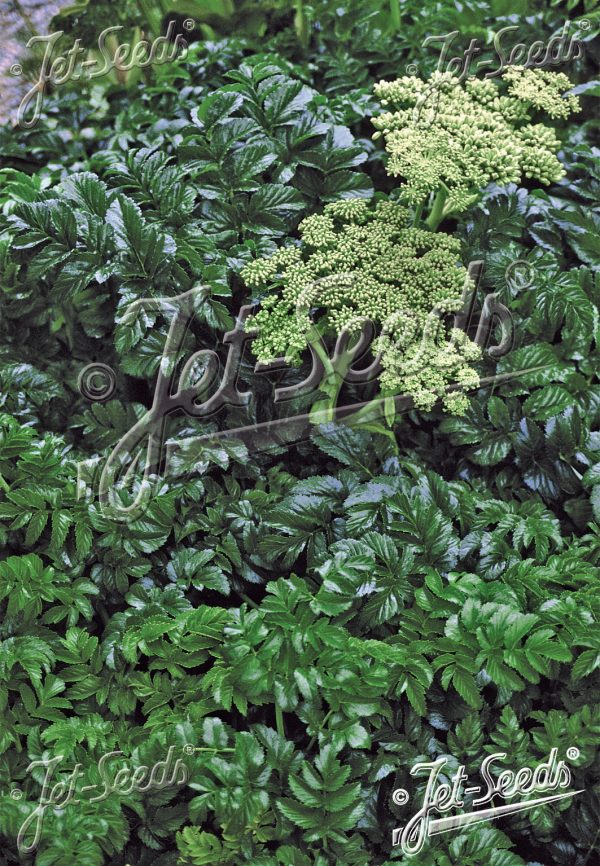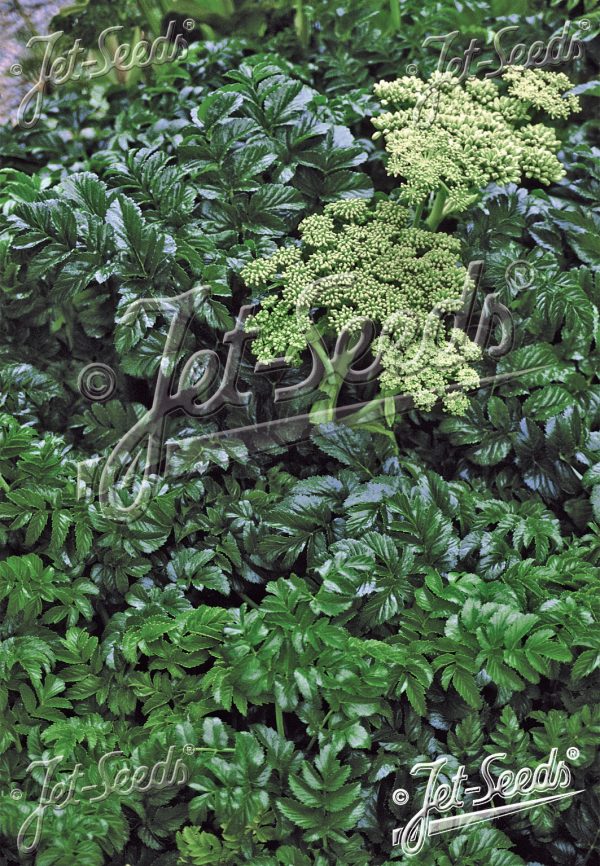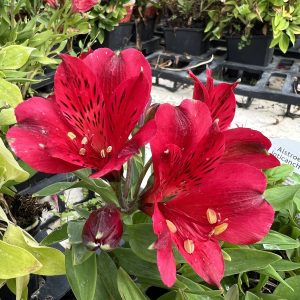Angelica pachycarpa
£6.45
Archangel. A striking specimen, bearing impressive, thick glossy ternate leaves. Enormous sprays of yellow-green flower head appear in early summer. Maximum height 75cm. Full sun. Hardy.
Description
Angelica pachycarpa is an impressive and architectural perennial known for its tall, bold form and stunning clusters of creamy white flowers. With its unique, large, glossy foliage and ability to attract pollinators, this plant makes a striking addition to any garden. Follow this planting and aftercare guide to ensure your Angelica pachycarpa thrives and flourishes in your garden.
PLANTING and AFTERCARE GUIDE
Best Planting Time
- Spring: The best time to plant Angelica pachycarpa is in early spring when the soil has warmed up. Planting during this time allows the roots to establish themselves before the growing season begins, promoting healthy growth and a more robust plant.
- Autumn: Alternatively, you can plant your Angelica in early autumn. This gives the plant time to settle in before the colder months, ensuring better growth when spring arrives.
Site Selection
- Sunlight: Angelica pachycarpa thrives in full sun to partial shade. Choose a site that receives ample sunlight, but partial shade can also work well, especially in hotter climates where the plant may need a little respite from the midday sun. Ensure the plant is positioned in an area where it can receive at least a few hours of direct sunlight each day.
- Soil: This plant prefers moist, well-drained soil. Angelica pachycarpa benefits from soil rich in organic matter, so it is important to enrich the soil with compost or other organic materials. The soil should retain moisture but never become waterlogged, as standing water can cause root rot.
Planting Instructions
- Prepare the Hole: Dig a hole that is twice the width and the same depth as the root ball of your Angelica. This ensures the roots have enough space to spread out and establish themselves comfortably.
- Soil Preparation: Enrich the soil by mixing in organic matter such as compost. This improves both fertility and drainage, allowing the roots of Angelica pachycarpa to thrive.
- Planting: Place the root ball of the plant in the hole, ensuring the top of the root ball is level with the surrounding soil. Gently backfill with soil, pressing down lightly to remove air pockets around the roots.
- Watering After Planting: Water your Angelica well after planting to help the soil settle around the roots. Ensure the soil is moist, but well-drained, to avoid waterlogging.
Watering Requirements
- Growing Season: During the growing season, Angelica pachycarpa requires regular watering. Keep the soil consistently moist but not soggy. This plant prefers a moist environment, so water during dry spells to prevent stress, but make sure the soil drains well to avoid root rot.
- Dormant Season: In the dormant season, reduce watering. Angelica needs very little moisture when not actively growing. Only water if the soil becomes excessively dry.
Feeding
- Spring: In early spring, apply a balanced slow-release fertiliser around the base of the plant to kickstart the growing season. This will help support strong growth and abundant foliage.
- Mid-Summer: A light feeding in mid-summer can encourage continued growth and help the plant produce healthy flowers. Avoid over-fertilising, as this may lead to excessive leafy growth at the expense of blooms.
Pruning
- Deadheading: To prolong the flowering period of Angelica pachycarpa, remove spent flowers regularly. This keeps the plant tidy and encourages more blooms throughout the season.
- Autumn Pruning: After the flowering season has ended, cut back your Angelica to ground level. This prepares the plant for dormancy and helps prevent the plant from becoming leggy in the next growing season.
Mulching
- Spring: Mulch around the base of Angelica pachycarpa in the spring to retain moisture, suppress weeds, and regulate soil temperature. Use organic mulch such as bark chips or compost.
- Winter: Apply a thicker layer of mulch in the winter to protect the roots from the cold and prevent frost damage. Mulch helps to insulate the plant and maintain soil moisture during dry spells.
Supporting the Plant
- Staking: Due to its tall and architectural form, Angelica pachycarpa may benefit from staking, especially in windy areas. Use tall stakes or a plant support ring to keep the plant upright and prevent breakage as it matures. This will also help support the plant’s large flower clusters.
Final Tips
Angelica pachycarpa is a striking and versatile plant that can become a focal point in your garden. By following this planting guide, your Angelica pachycarpa will grow tall and strong, producing beautiful white flower clusters that attract bees and other pollinators. Plant your Angelica pachycarpa in a sunny or partially shaded spot with moist, well-drained soil to ensure it flourishes. With regular care, including watering, feeding, and pruning, Angelica pachycarpa will reward you with stunning blooms and its signature bold foliage for many seasons to come.
See more Angelica from Proctors
Additional information
| Pot Size | |
|---|---|
| Plant Botanical Type | Perennial (herbaceous) |
| Flower Colour | Yellow, Green |
| Leaf Colour | Green |
| Varigated Leaf | No |
| Scent | Yes |
| Height | 0.75m |
| Spread | 0.6m |
| Blooms/foliage interest in | Summer |
| Evergreen | No |
| Hardiness | mild winter to – 5C |
| Container | Borders and Containers |
| Sun/shade | Partial Shade |
| Soil Type | Loam (normal) |
| Soil PH | Neutral |
| Drainage | Moist Soil |
| Hazerdous | No |
| Insect Attraction | Bees |











Anita (verified owner) –
Susan (verified owner) –
Such healthy plants, I am really impressed